As shown in the figure a body of mass m moving horizontally with speed √3m/s hits a fixed smooth wedge and goes up with a velocity 1vt in the vertical direction. If ∠ of wedge is 30∘, the velocity vf will be :

√3m/s
3m/s
1√3m/s
this is not possible
The correct Answer is:D
Velocity along the plane does not change
So √3Sinfo∘=V1sin30∘
⇒V1=3m/s>√3m/s
Which in impossible ∴Ans.(D)
Topper's Solved these Questions
- BOOK - RESONANCECHAPTER - DAILY PRACTICE PROBLEMSEXERCISE - dpp 567videos
DAILY PRACTICE PROBLEMS
- BOOK - RESONANCECHAPTER - DAILY PRACTICE PROBLEMSEXERCISE - dpp 577videos
DAILY PRACTICE PROBLEMS
- BOOK - RESONANCECHAPTER - DAILY PRACTICE PROBLEMSEXERCISE - dpp 548videos
DAILY PRACTICE PROBLEMS
- BOOK - RESONANCECHAPTER - CURRENT ELECTRICITYEXERCISE - Exercise54videos
CURRENT ELECTRICITY
- BOOK - RESONANCECHAPTER - ELASTICITY AND VISCOCITYEXERCISE - Advanced Level Problems9videos
ELASTICITY AND VISCOCITY
Similar Questions
As shown in the figure a body of mass m moving vertically with speed 3 m/s hits a smooth fixed inclined plane and rebounds with a velocity vf in the horizontal direction . If angle of plane with horizontal is 30∘ , the velocity vf will be
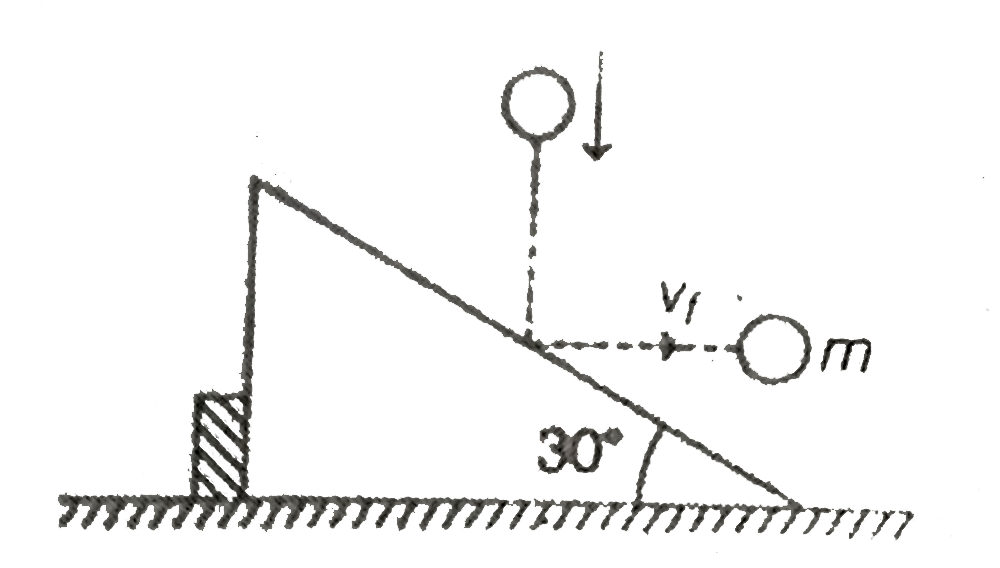 View Solution
View SolutionA wedge mass m rest on horizontal surface. The inclination of the wedge is α. A ball of mass m moving horizontal with speed u hits the inclined face of the wedge in elastically and after hitting slides up the inclined face of the wedge. Find the velocity of the wedge just after collision. Neglect any friction.
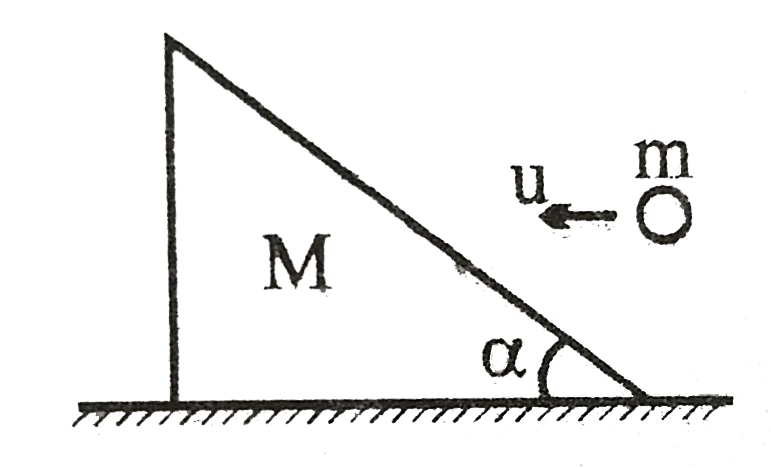 View Solution
View Solution
Knowledge Check
- Question 1 - Select One
In the block moves up with constant velocity v m//s. Find F
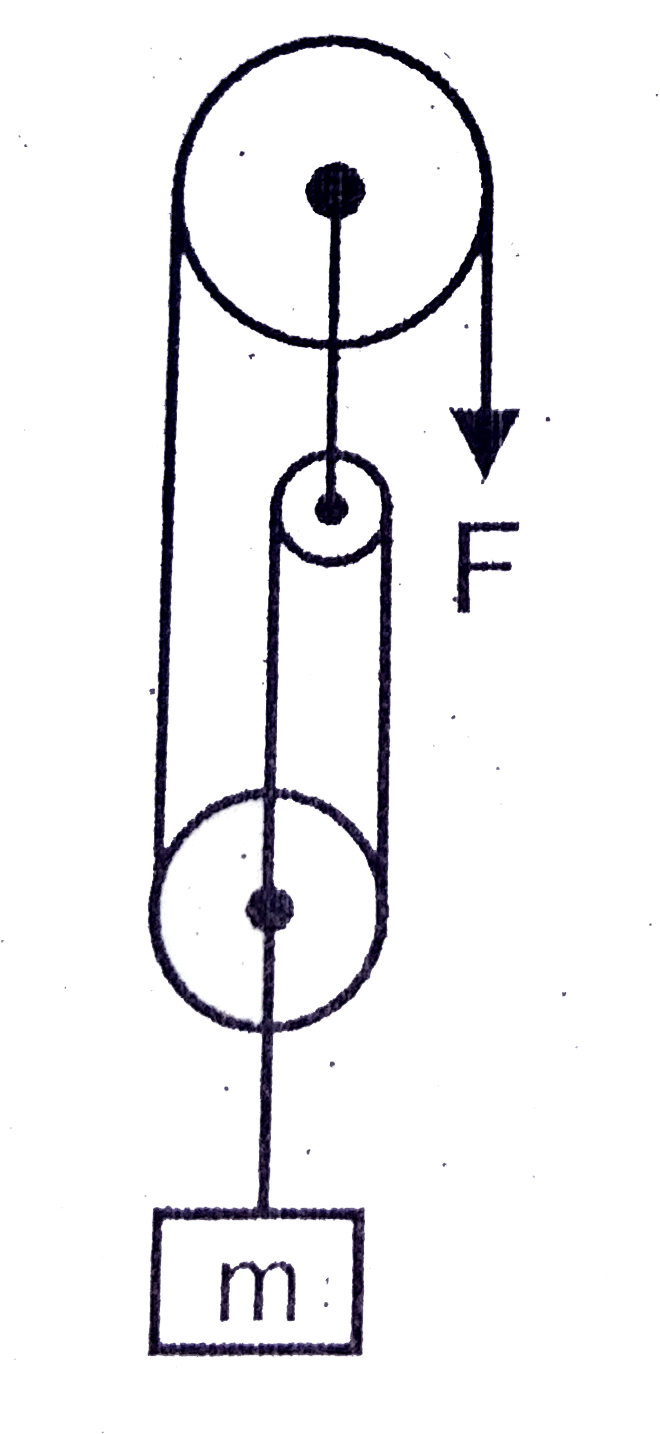 AF=mg2BF=2mg3CF=mg3DF=m3
AF=mg2BF=2mg3CF=mg3DF=m3 - Question 2 - Select One
A body of mass m moving at a constant velocity v hits another body of the same mass moving with a velocity v/2 but in the opposite direction and sticks to it. The common velocity after collision is
AvBv/4C2vDv/2 - Question 3 - Select One
A body of mass m moving with a constant velocity v hits another body of the same mass moving with the same velocity v but in the opposite direction and sticks to it. The velocity of the compound body after collision is
AvB2vCzeroDv/2
A particle of mass m moving horizontal with v0 strikes a smooth wedge of mass M, as shown in figure. After collision, the ball starts moving up the inclined face of the wedge and rises to a height h.
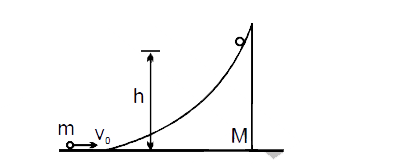
The final velocity of the wedgev2 isView SolutionA body of mass m moving with a constant velocity v hits another body of the same mass moving with the same velocity v but in the opposite direction and sticks to it. The velocity of the compound body after collision is
View SolutionA system is shown in the figure. Block A is moving with 1m/s towards left. Wedge is moving with 1m/s towards right. Then speed of the block B will be :
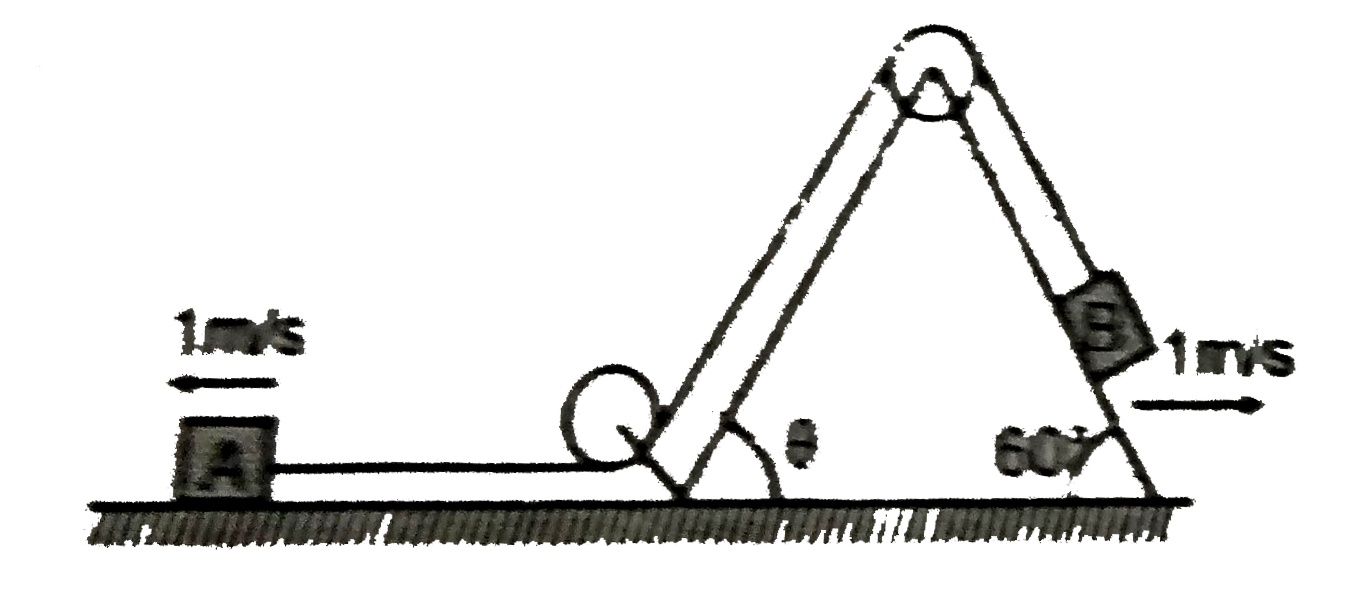 View Solution
View SolutionA body of mass m moving with a velocity v in the x direction collides with another body of mass M moving in y direction with a velocity V. They coalesce into one body during collision.
View SolutionA mass m moving horizontal (along the x-axis) with velocity v collides and stricks to mass of 3m moving vertically upward (along the y-axis) with velocity 2v. The final velocity of the combination is
View Solution

